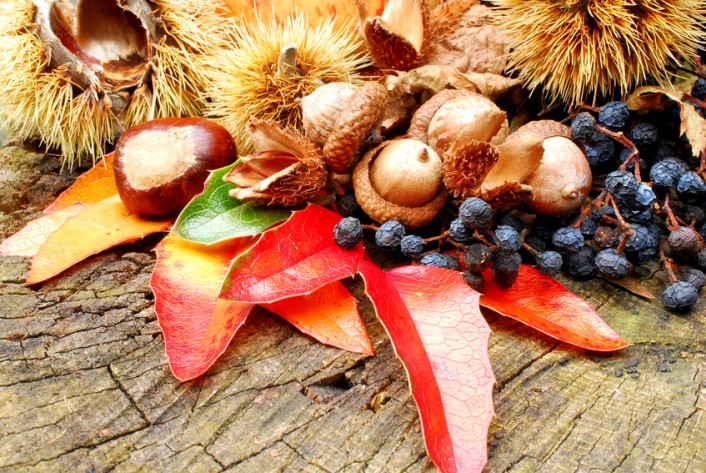November 1st is traditionally known as Samhain, or ‘End of Summer’. This time of year has traditionally had a huge resonance in Ireland, marking the end of the Celtic year, the start of winter and a time of reflection.
The four key points of the original Celtic calendar are: Imbolc (February 1st) which marks the start of Spring and Saint Brigid’s Day; Bealtaine (May 1st), the start of the Summer season; Lughnasa (August 1st) marking the start of Harvest time and Samhain in November, when winter time officially starts.

While Hallowe’en has nowadays become the biggest secular festival in Ireland and abroad, Samhain predated it and was a specifically Irish tradition first mentioned by Christians. There was fasting a few days on either side of the day of Samhain.
Samhain was a big time of transitions when chaos was said to reign and people were closest to the Otherworld. Fittingly it was time to remember the dead and perform rituals and divinations. The night between October 31st to November 1st was considered a time ‘between years’ to the Celts. During that time, borders between this world and the Otherworld were said to be open and flexible.
The pooka (ghost) was said to be out and about as was the bean sidhe (banshee) and fairies were said to be visible to human eyes, so it was a busy time for various sightings!
Preparation for Samhain mostly revolved around looking after livestock and animals were caught and brought in and some prepared for eating and filling the larder for winter supplies.
There were many other rituals around food when fruits and berries were harvested. It was believed and is still believed in some quarters that after the 1st November all fruit was not suitable for eating.
The Hill of Tara, which is near the headquarters of Rings from Ireland, was an important geographical point at Samhain and there were many meetings held there. There would be a general armistice during this time and enemies and battling tribes would come together, so that social events could occur aside from feuds and boundaries. All debts would be settled.
Feasting and merrymaking played a big part of this time of year. A big feast would include Colcannon, the mashed potato and kale or cabbage dish, covered in melting butter. Boxty bread, made from flour and mashed potatoes and the tradition of the Barmbrack which was popular, still continues to this day.
Samhain was one of the most spiritual times in the Irish calendar and it was traditional to extinguish all fires on Oiche Samhna making it the darkest night of the year. The fires would then be re-lit, marking the start of the new year. A huge bonfire would be lit on the Hill of Tiachtga near Athboy, County Meath and burning torches were carried from there far and wide to households.
The Christian traditions of All Saints Day (November 1st) and All Souls Day (November 2nd) are still celebrated in Ireland.
Famous Irish poet William Butler (WB) Yeats incorporated much fairy lore into his poetry, particularly around Samhain. In his book Fairy and Folk Tales of the Irish Peasantry (1888), he states:
"On November Eve they are at their gloomiest, for, according to the old Gaelic reckoning, this is the first night of winter. This night they dance with the ghosts, and the pooka is abroad, and witches make their spells, and girls sit at a table with food in the name of the devil, that the fetch of their future lover may come through the window and eat of the food."